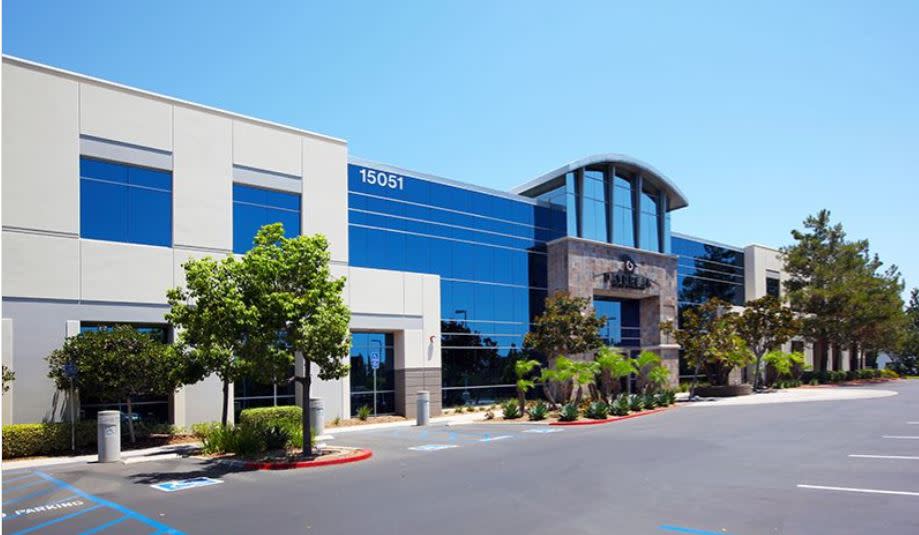CapitaLand Ascendas REIT navigates turbulence cautiously as US portfolio outperforms

CapitaLand Ascendas REIT's manager prefer bite-sized deals during rate hike cycle, US portfolio outperforms
In terms of acquisitions, William Tay, CEO of CapitaLand Ascendas REIT's (CLAR) manager, says he prefers small bites for the time being. So far this year, CLAR’s acquisitions have been very modest. It acquired a cold storage facility at 1 Buroh Lane for $191.9 million announced on Sept 14; Philips APAC Centre in Singapore for $104.8 million announced on Aug 4; and seven logistics properties in Chicago for the equivalent of $133.2 million announced on May 10.
“Overseas, we are likely to see less activity given that it is not easy to lend on a portfolio deal. Portfolio deals are likely to require a longer due diligence period and by the time it is completed, there could be another rate hike, so we prefer small bites, complete the due diligence and then announce. That is one reason why we prefer small bites versus a portfolio,” Tay explains, during a recent wide-ranging interview, to commemorate CLAR’s 20th anniversary.
“There is still a difference between asking price and bid price; there is no distressed sale. Sellers can hold on to assets. Transactions are quite thin,” Tay continues.
CLAR was listed as Ascendas REIT and started trading on Nov 19, 2002. Its IPO price was 88 cents. Based on its annualised DPU of 15.75 cents for this year, CLAR’s DPU yield would be 17.9%. Its actual DPU yield is 5.9%. CLAR’s longevity means that it has navigated SARS, the global financial crisis, the European debt crisis, the pandemic and currently the steepest rate hikes the world has known since the 1970s.
Could property funds start to divest if interest rates continue to rise? Would these hikes take a toll should these private property funds need to refinance? “We could see more deals in the market. Some assets were bought at very sharp [low] capitalisation rates when interest rates were low. But there was rent growth and they could still ride through this [turbulence] rather than [divest through] a sale,” Tay muses.
While the current interest rate hike cycle is causing discount rates to rise, and could lead to capitalisation rate expansion, valuations are also based on specific asset types, their ability to generate income, occupancy, quality of property and so on. “If the asset is still doing well, it should be able to handle the higher discount rate,” Tay reckons.
Moreover, in the US, capitalisation rates also depend on the sub-markets. In addition, although discount rates tend to adjust upwards (sooner than cap rates), if the assets cash flow continues to grow, valuations can hold, or even rise.
So far so good
Back in 2019, investors and analysts questioned whether CLAR’s acquisition of 28 business parks in the US from its sponsor for $1,285 million was a wise move. CLAR had proposed the acquire the 28 US business parks and two properties in Singapore for a total of $1.66 billion. To partly fund the acquisition, CLAR raised $1.31 billion in a rights issue.
During the course of November 2019, Tay had to meet with analysts and investors to explain the rationale. Some were difficult to convince. Three years on, they are likely to be more accepting of that acquisition. CLAR’s US portfolio’s occupancy and rental reversions are – arguably – better than those of the pure US REITs listed on SGX.
Rental reversions have been consistently in double digits for the US portfolio. The committed occupancy rate for the US portfolio stood at 95.3% as at end-June 2022 compared to 94% as at end-December 2022 and 92.8% as at end-June 2021. Some individual properties maybe lower, but only three, perhaps four properties’ occupancies have fallen since June 2021.
In fact, CLAR announced it will undertake a convert-to-suit exercise and transform on of its business park’s properties in San Diego into a life science property for Nasdaq-listed Crinetics Pharmaceuticals at a cost of US$40 million. The new lease will be a triple-net lease commitment of 11.5 years, with an option to extend two additional five-year terms. The yield-on-cost of the conversion is likely to be 9%.
Keppel Pacific Oak US REIT (KORE), the best performer this year amongst the US S-REITs, and with the best operating metrics, announced committed occupancy of 92% as at June 30, 2022, with rental reversions of 1.6%. Its DPU fell marginally y-o-y to 3.02 cents. Based on its last done price, KORE is trading at an annualised DPU yield of 10.2%, the most compressed among the US S-REITs.
“There's no there's no such thing as no risk. The key difference obviously lies in our ability to execute. Occupancy overseas has been strong; we are very committed to grow in a disciplined manner. We stay selective; prudent; each acquisition is accretive; and we make sure there’s a team on the ground able to negotiate leases and manage the properties. Over time, we have shown that asset performance has not gone down; they continue to perform,” Tay says, almost as a response (or riposte perhaps?) to CLAR’s erstwhile detractors back in 2019.
Whatever the cases, it appears increasingly that REITs with strong sponsors, good managers, sound capital management strategies and the ability to manage the asset mix and the properties themselves are able to maintain a compressed yield spread versus risk-free rates.
See Also:
Click here to stay updated with the Latest Business & Investment News in Singapore
Get in-depth insights from our expert contributors, and dive into financial and economic trends

 Yahoo Finance
Yahoo Finance 